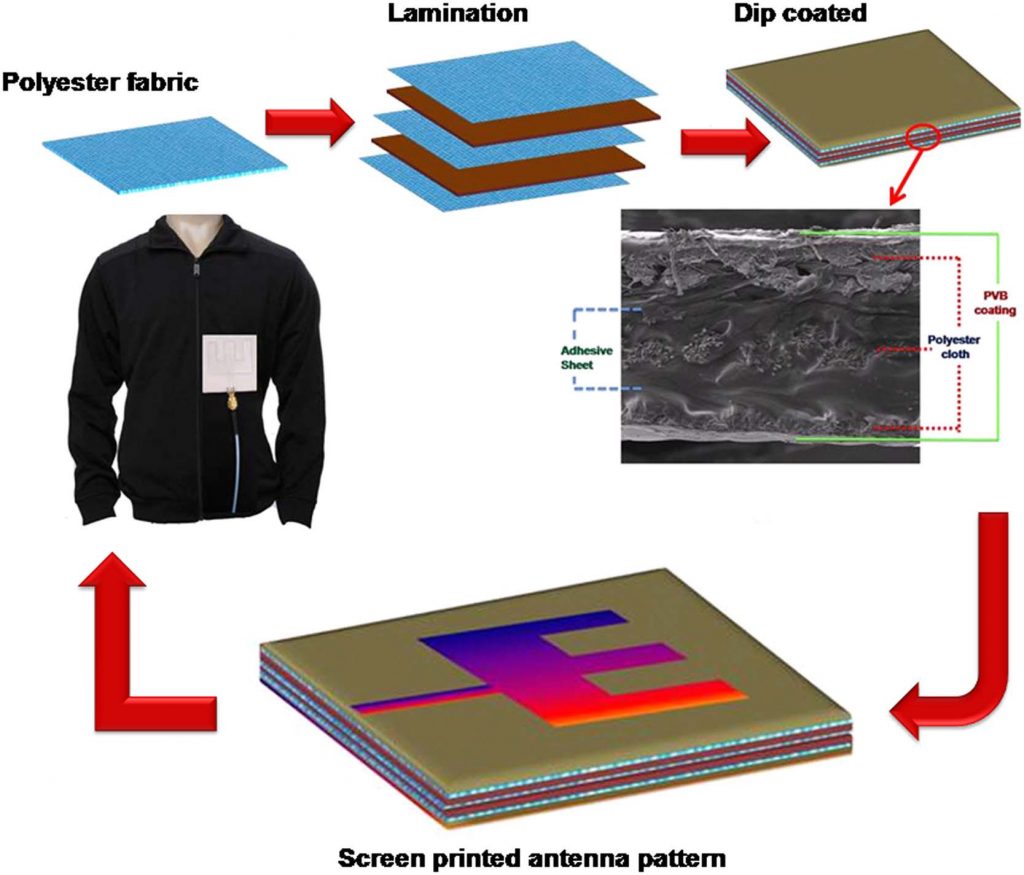The National Institute for Interdisciplinary Science and Technology has made a new breakthrough in wearable electronic textiles. A research group is workshopping polyester-based fabric with antennas for wireless communication. As a result, the textile can monitor body temperature, heartbeat, and blood pressure in real time.
The fabric consists of 3 layers of commercial grade polyester coated with PVB resin that helps prevent leakage. According to the research team, it is also waterproof. This sort of arrangement can easily fit into the lining of most clothes such as jackets.
The team tested its capabilities by printing an E-shaped electronic patch as a transmitter. Running at 3.37 GHertz, the E-atenna is capable of standard Worldwide Interoperability for Microwave Access (WiMAX). The team also tested its durability. They found that the material is capable of operating normally even when bent for cycles of 100 times. The stress did not affect the radiation efficiency of the patch.
Applications of Electronic Textiles
3D printing has enabled a whole array of research into the field of wearable electronics. Previously, we reported on Harvard university’s work with wearable electronics consisting of TPU. Similarly, both these projects use wearable tech for monitoring proper bodily functions. The core difference in the projects is that NIIST plans to use it for military applications.
“Our goal is to make wearable antenna which can be embedded in the jacket worn by soldiers in remote locations […] The antenna can sense and communicate data in a non-intrusive manner. This way we can monitor the health of soldiers,” said Dr. Kuzhichalil Peethambharan Surendran.
Aside from the military applications, it can also serve various medical functions. Eventually, the material could be retooled to serve as a non-intrusive way for doctors to monitor patients. It could also allow for any type of information delivery in non-military conditions where a subject needs to be constantly in check, such as space travel or marine exploration.
The full paper is available here.











